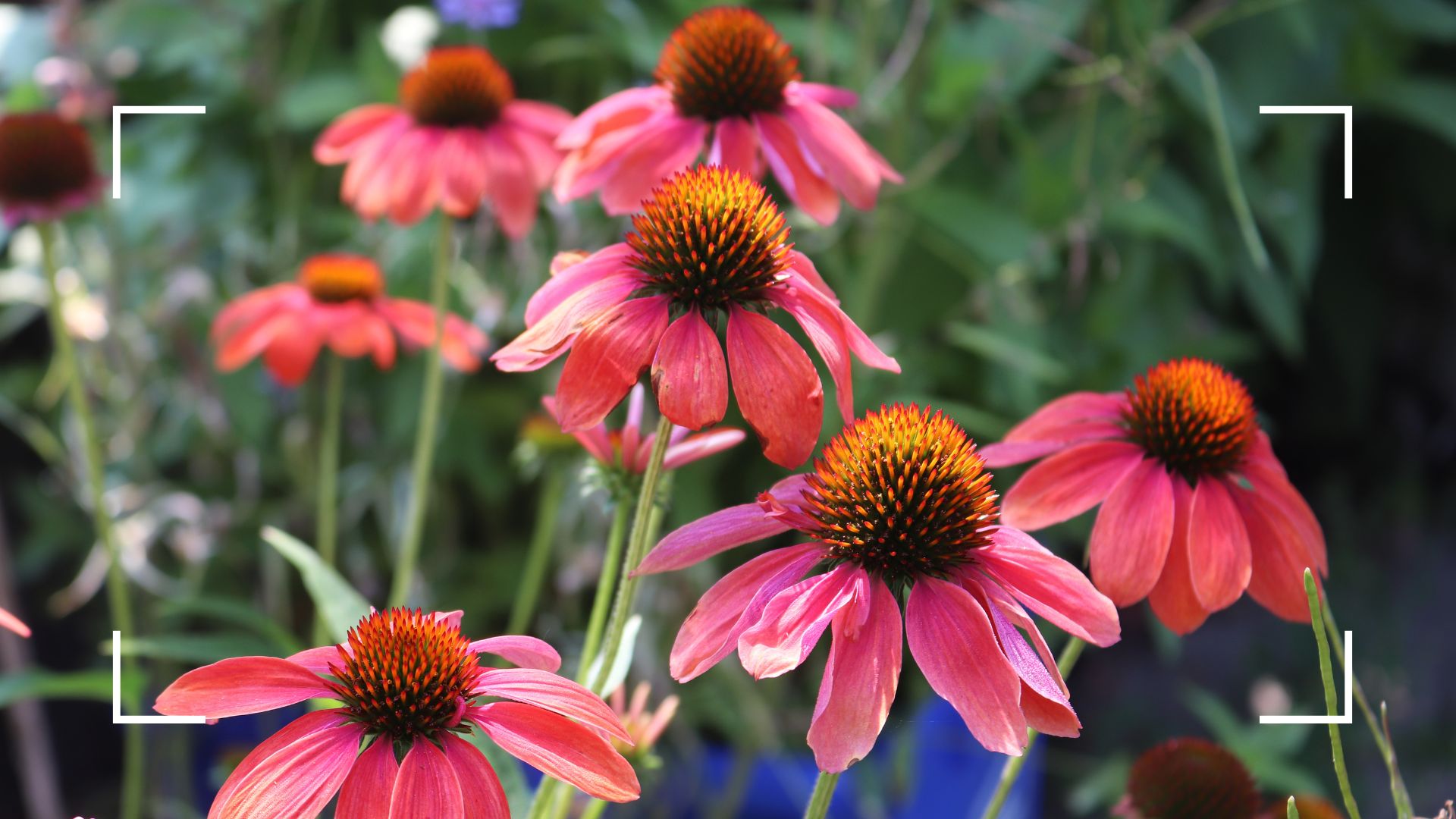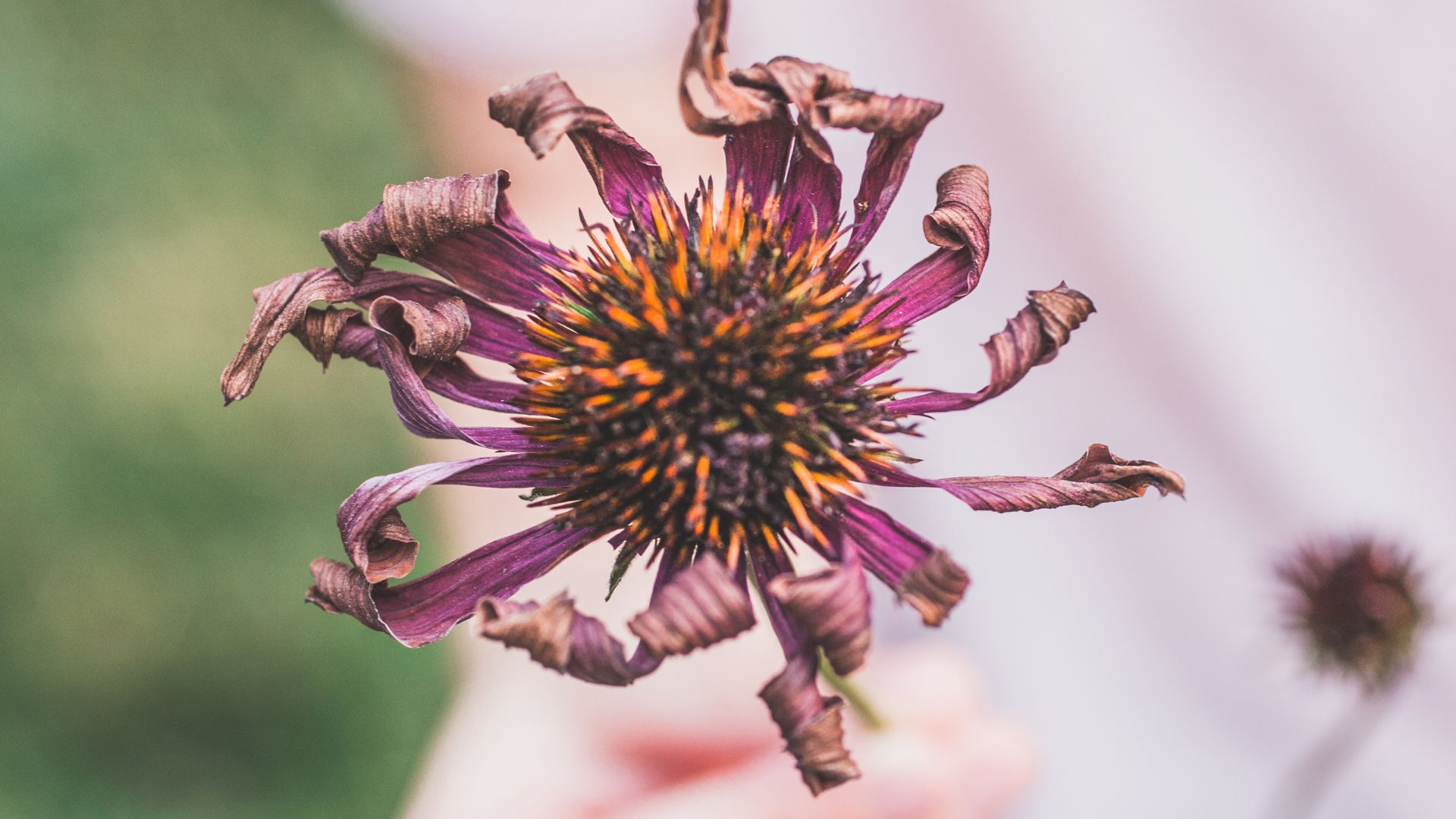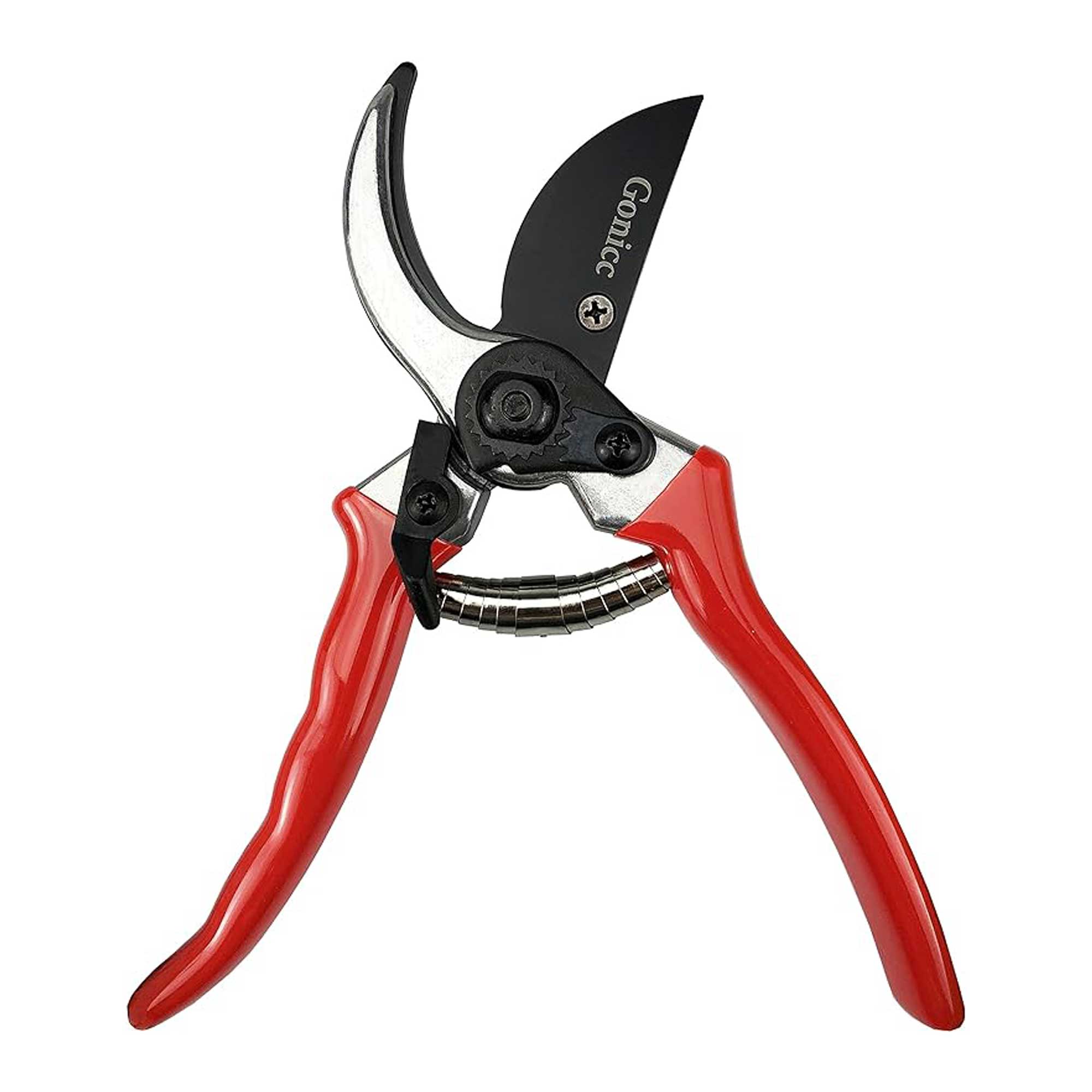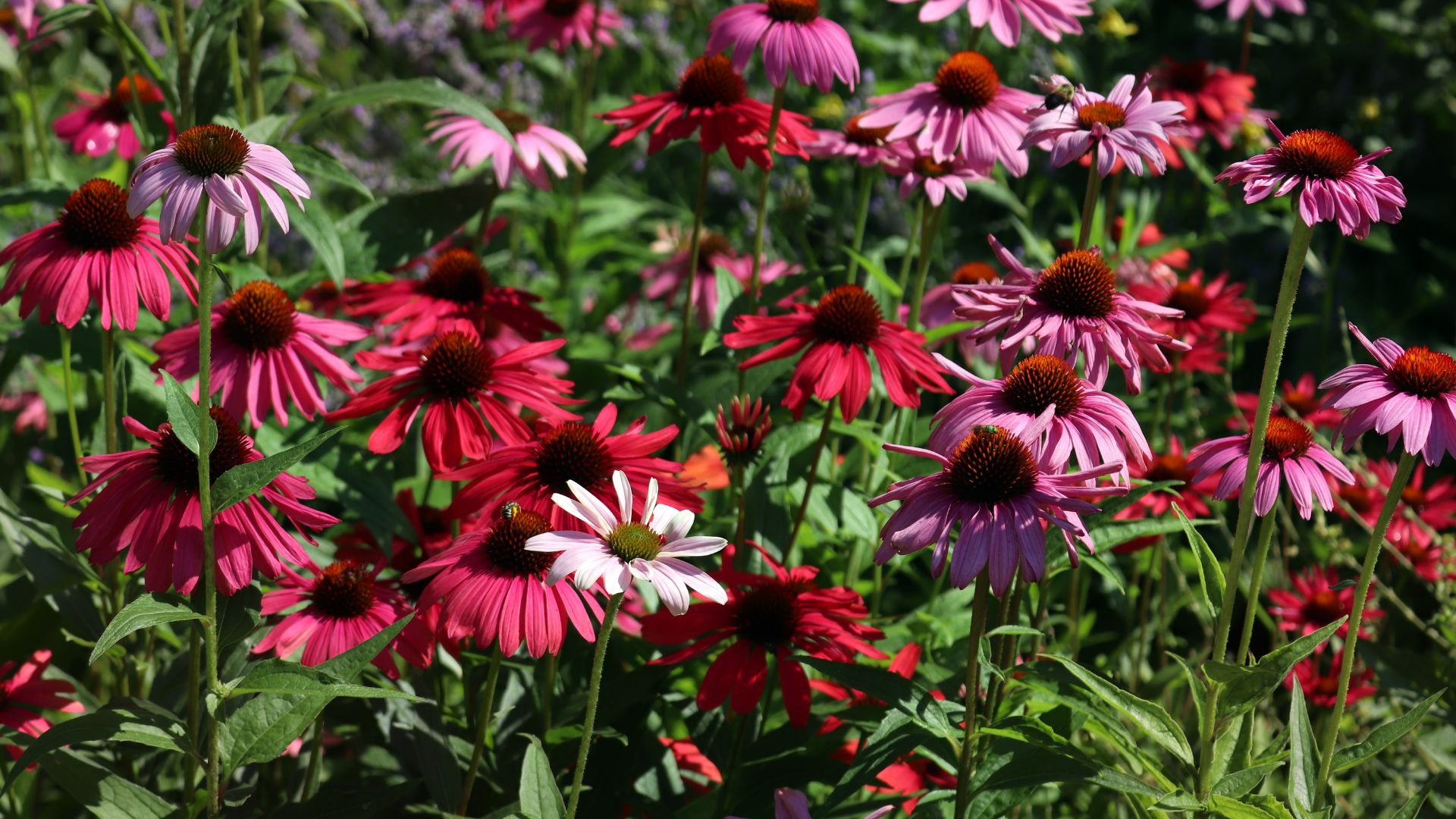Should you deadhead echinacea? Garden experts share their advice on whether to chop or not
Before you get the secateurs out, follow our expert's guidance to discover if your echinacea will benefit from deadheading


As a relative of the daisy, it's no wonder echinacea is a popular pick bloom amongst many gardeners. But to ensure this pretty flower thrives, should you be deadheading once the blooms are spent?
With the list of so many plants you shouldn't deadhead it can feel like a bit of a gamble as to whether specific species will benefit from it or not. The last thing you want is to cause more damage to your spent flowers, stopping them from regrowing the next year.
To save you the panic and potential harm to your echinacea, we've asked gardening experts for their guidance on deadheading.
Should you deadhead echinacea? Expert advice
When it comes to sorting your garden out, deadheading is a fantastic step for improving the health of your plants and their overall appearance. But some plants are better off without. Is echinacea one of them?
"The decision to deadhead echinacea is down to your personal preference and gardening goals," says Fiona Jenkins, a gardening expert at MyJobQuote.co.uk.
"Deadheading redirects the plant's energy away from producing seeds and into new flowers. This can significantly extend the blooming season and will provide you with a longer and more colourful display," she adds.
As previously mentioned, deadheading will help transform the look of your garden without spending a penny, as well as help to keep the spread of flower seeds under control.
Sign up to our free daily email for the latest royal and entertainment news, interesting opinion, expert advice on styling and beauty trends, and no-nonsense guides to the health and wellness questions you want answered.

"However, the seeds of echinacea are vital food sources for birds in late summer and autumn. Leaving the spent flowers can help to support local wildlife," continues Fiona.
If you want your echinacea to spread and create a larger patch in your garden, then leaving the flower heads on is the best way to achieve this. It ultimately comes down to personal preference.

Fiona Jenkins is a UK-based landscaper with over 25 years of experience in the industry. As a gardening expert for MyJobQuote, one of the UK's top trades-matching sites, Fiona offers her expert advice to MyJobQuote's tradespeople and homeowners, and has also been featured as a gardening expert for a range of reputable publications.
Shop deadheading essentials

RRP: £9.95 | These popular secateurs feature a carbon steel blade and lightweight, non-slip handles, making precision pruning and deadheading easy.

RRP: £7.97 | These gardening gloves have been awarded ‘Amazon’s Choice’, and it’s easy to see why – they’re breathable, comfortable, and stylish.
Do you cut the dead flowers off Echinacea?
Learning how to deadhead your plants properly will streamline the entire process and ensure you're only chopping off the right parts of the plant. For echinaceas, this includes the dead flower.
"Once I’ve enjoyed the colourful first blooms of echinacea, I watch for them starting to fade and then prepare to deadhead," starts Lucie Bradley, gardening expert at Easy Garden Irrigation.
"I always use a sharp, clean pair of secateurs to cut through the stems as their sturdy, thick stems are too stout to snap with my hands. After locating the faded bloom, I simply follow the stem down until I find the next set of leaves or a new bud and cut through the stem just above this point," she explains.
Lucie points out that by cutting the stem back to this point, you are directing the plant's energy to develop new blooms rather than producing seeds from he faded flower head.

With over 28 years working in the garden industry, Lucie has been fortunate enough to spend every day speaking to both amateur and professional gardeners. Encouraged to garden since she was old enough to walk, she believes that you can never know everything about gardening, as it is constantly evolving.
Does Echinacea benefit from deadheading?
Whether you're deadheading verbena or daffodils, various benefits will help your plants in both the short and long term.
"Deadheading echinacea early in the season benefits us as it keeps our garden looking tidy by removing the faded, decaying flowers," says Lucie.
"However, it also benefits the plant as by removing the decaying heads, which would attract pests, you are also reducing the plant's susceptibility to fungal diseases by increasing air flow around the plant," she adds.
FAQs
How to keep Echinacea blooming?
In the same way you'd prune roses to maximise their blooming period, there are ways you can help keep your echinacea looking its best for longer.
"To keep your echinacea blooming for as long as possible, regular deadheading is recommended. Regularly check your plants and remove spent blooms throughout the summer. Echinacea thrives in full sun, so it will do best when it gets at least 6 to 8 hours of direct sunlight each day," recommends Fiona.
She does say that while they are good drought-tolerant plants once established, they will benefit from regular watering, especially during dry spells.
"Ensure they are planted in well-drained soil to prevent root rot. They don’t require much fertiliser, but a thin layer of compost in the spring can provide them with the nutrients they need to produce strong blooms," she finishes.

Will Echinacea bloom twice?
Although echinaceas aren't late summer flowers, meaning they won't be around later in the year, they can sometimes provide a second round of flowering.
"While it doesn’t bloom in two distinct cycles like some plants, echinacea will produce a second flush of flowers after the first round has faded, especially if you deadhead them. The initial blooms are typically the largest and most impressive," explains Fiona.
"Deadheading the spent flowers can encourage the plant to produce a second and sometimes even a third round of blooms that are usually smaller but still add significant colour to your late summer garden. The process is continuous, and with proper care, you can enjoy flowers from early to mid-summer right up until autumn," she continues.
If you really want long lasting blooms from your echinacea, Lucie suggests picking the right variety.
"Some varieties of echinacea have been specially bred to have longer blooming times, such as ‘Southern Belle’ one of the longest blooming echinaceas which can flower from early summer until frost, or ‘Tomato Soup’ which blooms from midsummer until frost," she explains.

Emily joined woman&home as a staff writer after finishing her MA in Magazine Journalism from City University in 2023. After writing various health and news content, she now specialises in lifestyle, covering unique cleaning hacks, gardening how-tos, and everything to help your houseplants thrive.
You must confirm your public display name before commenting
Please logout and then login again, you will then be prompted to enter your display name.